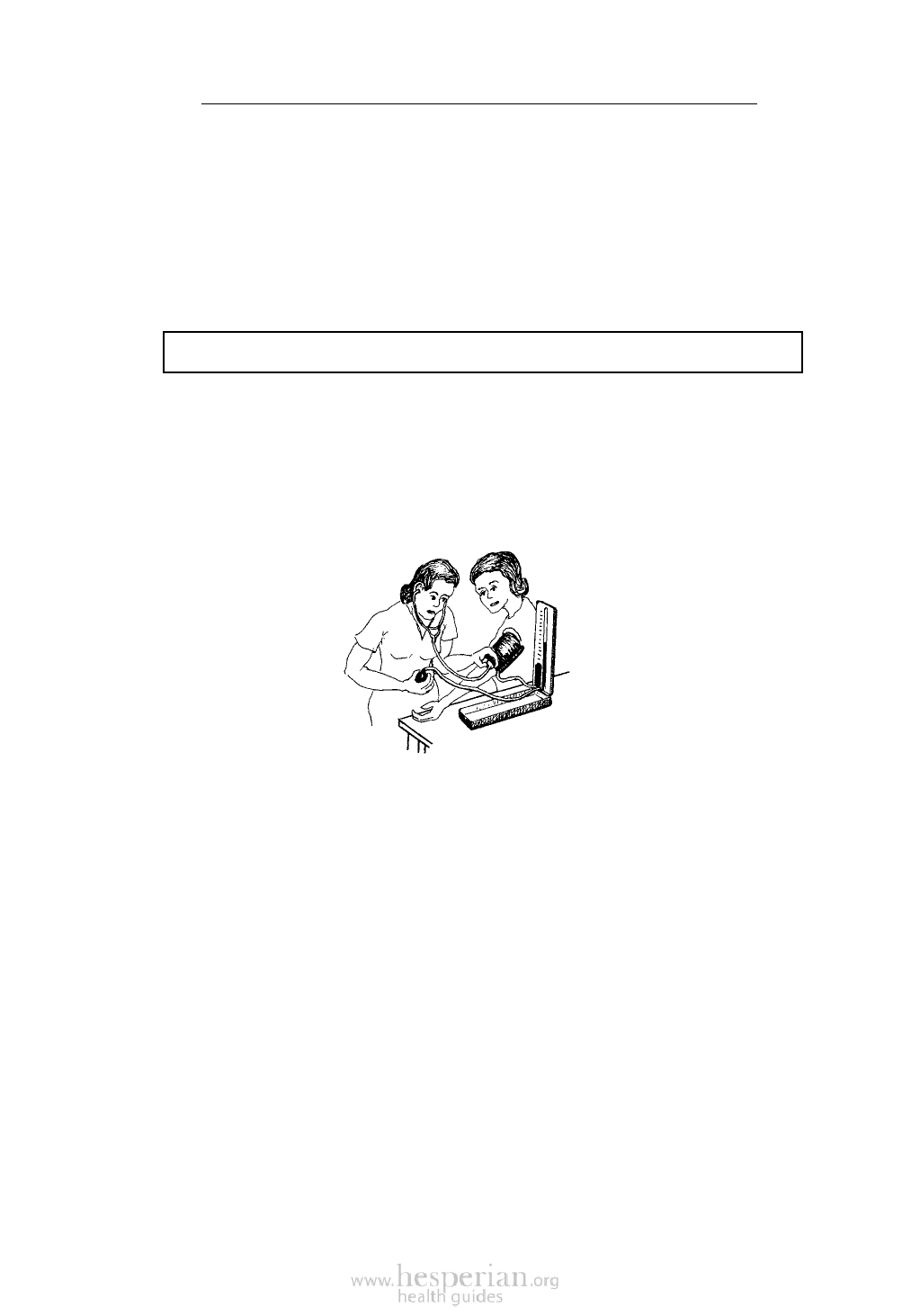
LEARNING TO MEASURE BLOOD PRESSURE
19-13
Some health programs choose not to teach health workers how to measure
blood pressure. Others cannot afford the necessary equipment. But blood pressure
measurement can be an important skill—especially in communities where high
blood pressure and related diseases are common. It is also a valuable skill for
midwives and others who regularly check women’s health during pregnancy—
because high blood pressure increases the risk for the mother during childbirth.
Also, a marked increase in blood pressure late in pregnancy may be a sign of
pre-eclampsia (see WTND, p. 249).
Anyone who knows how to count can learn to measure blood pressure.
Health workers learn more easily how to take blood pressure when they
understand the principles behind it.
For this reason, it helps if they learn with the older type of mercury
sphygmomanometer, or at least see one demonstrated.
With this older kind of blood pressure instrument, learners can actually see the
pressure lift the mercury in the tube. Blood pressure is measured in millimeters
(mm.) of mercury.
mercury
sphygmomanometer
Newer blood pressure cuffs are all electric. They do everything for you except
wrap themselves onto the person’s arm. But if you have an older cuff, follow these
instructions:
To measure blood pressure:
• Explain what you are going to do, so the person will not be alarmed.
• Fasten the pressure cuff around the person’s bare upper arm.
• Close the valve on the rubber bulb by turning the screw clockwise.
• Pump the pressure up to more than 200 millimeters of mercury.
• Place the stethoscope over the artery on the inner side of the person’s elbow
• Very slowly, release the pressure in the cuff by loosening the screw on the
rubber bulb.
• With the stethoscope, listen carefully for the pulse as you continue letting
the air out of the cuff. As the needle of the gauge (or the level of mercury)
slowly drops, take two readings:
1. Take the first reading the moment you begin to hear the soft thumping
of the pulse. This happens when the pressure in the cuff drops to the
highest pressure in the artery (systolic or ‘top’ pressure). This top pressure
is reached each time the heart contracts and forces the blood through the
arteries. In a healthy person, this top pressure reading is usually around
110-120 mm.